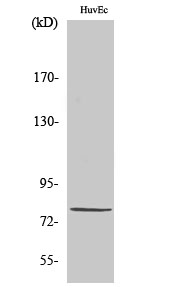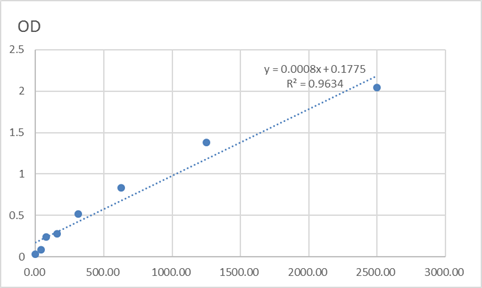Total PIAS 1 Cell-Based Colorimetric ELISA Kit
- Catalog No.:KA3410C
- Applications:ELISA
- Reactivity:Human;Mouse
- Gene Name:
- PIAS1
- Human Gene Id:
- 8554
- Human Swiss Prot No:
- O75925
- Mouse Swiss Prot No:
- O88907
- Storage Stability:
- 2-8°C/6 months
- Other Name:
- E3 SUMO-protein ligase PIAS1 (EC 6.3.2.-) (DEAD/H box-binding protein 1) (Gu-binding protein) (GBP) (Protein inhibitor of activated STAT protein 1) (RNA helicase II-binding protein)
- Detection Method:
- Colorimetric
- Background:
- domain:The LXXLL motif is a transcriptional coregulator signature.,domain:The SP-RING-type domain is required for promoting EKLF sumoylation.,function:Functions as an E3-type small ubiquitin-like modifier (SUMO) ligase, stabilizing the interaction between UBE2I and the substrate, and as a SUMO-tethering factor. Plays a crucial role as a transcriptional coregulation in various cellular pathways, including the STAT pathway, the p53 pathway and the steroid hormone signaling pathway. The effects of this transcriptional coregulation, transactivation or silencing, may vary depending upon the biological context.,pathway:Protein modification; protein sumoylation.,PTM:Sumoylated.,similarity:Belongs to the PIAS family.,similarity:Contains 1 SAP domain.,similarity:Contains 1 SP-RING-type zinc finger.,subcellular location:Interaction with CSRP2 may induce a partial redistribution along the cytoskeleton.,subunit:Binds SUMO1 and UBE2I. Interacts with AR, CSRP2, JUN, MDM2, NCOA2, TP53, RNA helicase II and STAT1 dimers, following IFN-alpha-stimulation. Interacts with SP3, preferentially when SUMO-modified. Binds preferentially AT-rich DNA sequences, known as matrix or scaffold attachment regions (MARs/SARs) (By similarity). Interacts with PLAG1. Interacts with KLF8; the interaction results in SUMO ligation and repression of KLF8 transcriptional activity and of its cell cycle progression into G(1) phase.,tissue specificity:Expressed in numerous tissues with highest level in testis.,
- Function:
- transcription, regulation of transcription, DNA-dependent, proteolysis, intracellular signaling cascade, protein kinase cascade, JAK-STAT cascade, macromolecule catabolic process, positive regulation of biosynthetic process, positive regulation of macromolecule biosynthetic process, positive regulation of macromolecule metabolic process, positive regulation of gene expression, modification-dependent protein catabolic process, protein catabolic process, steroid hormone receptor signaling pathway, androgen receptor signaling pathway, intracellular receptor-mediated signaling pathway, positive regulation of cellular biosynthetic process, regulation of protein modification process, positive regulation of protein modification process, regulation of cellular protein metabolic process, positive regulation of cellular protein metabolic process, regulation of protein sumoylation, positive regulat
- Subcellular Location:
- Nucleus speckle . Nucleus, PML body . Interaction with CSRP2 may induce a partial redistribution along the cytoskeleton.
- Expression:
- Expressed in numerous tissues with highest level in testis.
- June 19-2018
- WESTERN IMMUNOBLOTTING PROTOCOL
- June 19-2018
- IMMUNOHISTOCHEMISTRY-PARAFFIN PROTOCOL
- June 19-2018
- IMMUNOFLUORESCENCE PROTOCOL
- September 08-2020
- FLOW-CYTOMEYRT-PROTOCOL
- May 20-2022
- Cell-Based ELISA│解您多样本WB检测之困扰
- July 13-2018
- CELL-BASED-ELISA-PROTOCOL-FOR-ACETYL-PROTEIN
- July 13-2018
- CELL-BASED-ELISA-PROTOCOL-FOR-PHOSPHO-PROTEIN
- July 13-2018
- Antibody-FAQs



